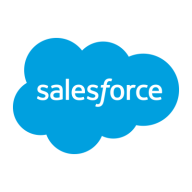

Salesforce Platform and Microsoft Power Apps are leading competitors in the CRM and app development industry. Salesforce Platform appears to have the edge in terms of scalability and extensive features tailored for sales and marketing, while Microsoft Power Apps stands out for its low-code rapid development and seamless integration within the Microsoft ecosystem.
Features: Salesforce Platform offers impressive scalability, integration capabilities, and customization options, enabling robust sales and marketing solutions. Its ease of use and automation features support a global reach. Microsoft Power Apps shines with low-code capabilities, quick development time, and strong data connectivity, making it highly user-friendly and well-integrated within Microsoft's suite of products.
Room for Improvement: Salesforce Platform could better its pricing structure and simplify integration with non-Salesforce products, as well as reduce complexity in setup. Microsoft Power Apps can improve in error handling and integration with non-Microsoft applications, and faces scalability challenges when working with large datasets.
Ease of Deployment and Customer Service: Salesforce Platform is primarily deployed on the Public Cloud and offers robust customer support, albeit with potential delays in response times. Microsoft Power Apps provides flexible cloud deployment and strong technical support but encounters issues with external system integration. Both products prioritize user support but vary in cloud strategies.
Pricing and ROI: Salesforce Platform, though often viewed as expensive, provides extensive features and delivers a strong ROI over time, usually requiring licensing negotiations for cost-effectiveness. Microsoft Power Apps is priced competitively within its ecosystem, promoting efficiency and flexibility, though more advanced features may introduce licensing complexity. Both platforms offer significant ROI across various business needs.
The connection between Power Apps and Power BI simplifies generating and presenting reports, alleviating the workload and enhancing productivity.
The aim is to create a cleaner interface to replace spreadsheets, thus standardizing processes and improving efficiency.
Salesforce saved about 40% to 50% of my time by allowing me to manage and maintain client data and account progress.
Their assistance was crucial as we developed the solutions.
Community support is closer to an eight or nine since there's a big enough community that someone has likely faced the same problem and posted about it, improving the community overall.
Microsoft's technical support is around a seven to eight.
If it is flexible and includes premium connectors, scalability is easy.
It is quite scalable, though there are some limitations regarding the number of records.
Salesforce's scalability was not a problem.
Salesforce Platform is absolutely scalable for us.
We are using it globally in thirty countries.
I would rate the stability of Microsoft Power Apps as a nine out of ten.
On occasion, we had to log in and out frequently, open tickets with our IT team for account reconfiguration, or request permissions to access the system.
We have never had any problems with it.
Sometimes the system is stuck when many users are using it.
This would assist business process users who lack coding knowledge.
These tools should be intuitive for business users who will need at least a week of training to use them effectively.
In many use cases, applications might require importing data exceeding two thousand records, potentially reaching one hundred thousand.
Salesforce could improve by adding more capabilities to the dashboard, such as additional fields for more filters and more control over what I would like to see.
Salesforce could improve by offering AI features or functionalities to help business decision-makers analyze business history, suggest forward strategies, and participate in events.
Using AI extensively to make the platform easier to use would also be beneficial.
For small to medium enterprises, it is affordable, especially with Microsoft Enterprise licensing.
For more elaborate work, an upgrade to an enterprise license, costing around $35 per license, is needed.
It is in the middle range and considered reasonable given the current price.
Salesforce Platform may be on the expensive side.
It integrates seamlessly with Power Automate for process automation and connects with email, SharePoint, Power BI, and MS Teams, facilitating everyday processes.
Canvas Apps provide complete user design flexibility with many connectors to integrate into Microsoft Power Apps, making it efficient to fetch and update information from various data sources such as Dataverse, Excel, SharePoint, and Azure.
I run a couple of SQL Servers, which are premium connectors in Microsoft Power Apps, and that requires a different licensing model than what a standard E5 license covers.
This integration allows us to manage customers from all aspects in one place, providing a clear view.
Salesforce offers control over the opportunities to see where we are and gives me high-level dashboards on each opportunity stage.
The most valuable features of Salesforce are its level of customization and integration.
| Product | Market Share (%) |
|---|---|
| Microsoft Power Apps | 12.2% |
| Salesforce Platform | 5.8% |
| Other | 82.0% |


| Company Size | Count |
|---|---|
| Small Business | 30 |
| Midsize Enterprise | 17 |
| Large Enterprise | 50 |
| Company Size | Count |
|---|---|
| Small Business | 38 |
| Midsize Enterprise | 26 |
| Large Enterprise | 38 |
Microsoft Power Apps is a rapid application development software and low-code development platform. The solution consists of a suite of apps, services, connectors, and a data platform. It provides an environment for building custom apps which is suitable for different businesses.
Microsoft Power Apps allows users to not only build applications, but also connect them to Microsoft's other sources, including the underlying data platform Microsoft Dataverse, as well as online and on-premise sources such as SharePoint, Dynamics 365, and Microsoft 365. The applications built using Microsoft Power Apps have a responsive design that makes them suitable for work in browsers and on mobile applications on different devices.
The no-code side of the product makes it suitable for complete beginners to app building, allowing them to easily create fully functional applications with many features. The solution also has a specialized platform for developers where specialists can access data and metadata, create custom connectors, integrate with external data, and apply business logic. The solution allows users to create three types of apps: canvas, model-driven, and portal. They are made using:
Microsoft Power Apps Features
The three different design tools of the solution, Power Apps Studio, App Designer, and Power Apps Portals Studio, come with various features which allow users to utilize the tools. Some of these features include:
Microsoft Power Apps Benefits
The product brings various benefits to organizations and individuals who utilize it. Some of the biggest advantages of Microsoft Power Apps include:
Reviews from Real Users
An IT Specialist (INFOSEC) at a government appreciates this tool because it is low-code, low learning curve, and reduces manpower.
Rafael T., a data engineer at NTT Security, likes Microsoft Power Apps, because it is great for making apps quickly, has helpful support, and integrates with Power BI.
Salesforce Platform is a tool that provides application building with open application programming interfaces (APIs), integration tools, back-end services, starter templates, and developer environments. With a low-code interface, users are able to build applications and benefit from automated processes. The product helps customers to increase work productivity and save on IT costs through efficient, easy-to-understand, methods for creating applications.
Salesforce Platform allows companies to build and operate intelligent applications at scale and share them with employees and customers in real time. The tool secures companies' data while connecting and synchronizing it simultaneously across their Customer 360 accounts. The main components of the product are:
Salesforce Platform Features
Also referred to as a “drag and drop app builder," this solution offers various features for customers to create intelligent applications and build personalized services for clients, partners, and employees within the apps.
Salesforce Platform Benefits
The benefits of using Salesforce Platform include:
Reviews from Real Users
A vice president at a healthcare company values Salesforce Platform because it is flexible and user-friendly with helpful pre-built schemas.
Peter G., a senior technical consultant at a tech services company, rates Salesforce Platform highly because it is intuitive, quite easy to learn, and stores all kinds of relevant sales information.
We monitor all Rapid Application Development Software reviews to prevent fraudulent reviews and keep review quality high. We do not post reviews by company employees or direct competitors. We validate each review for authenticity via cross-reference with LinkedIn, and personal follow-up with the reviewer when necessary.